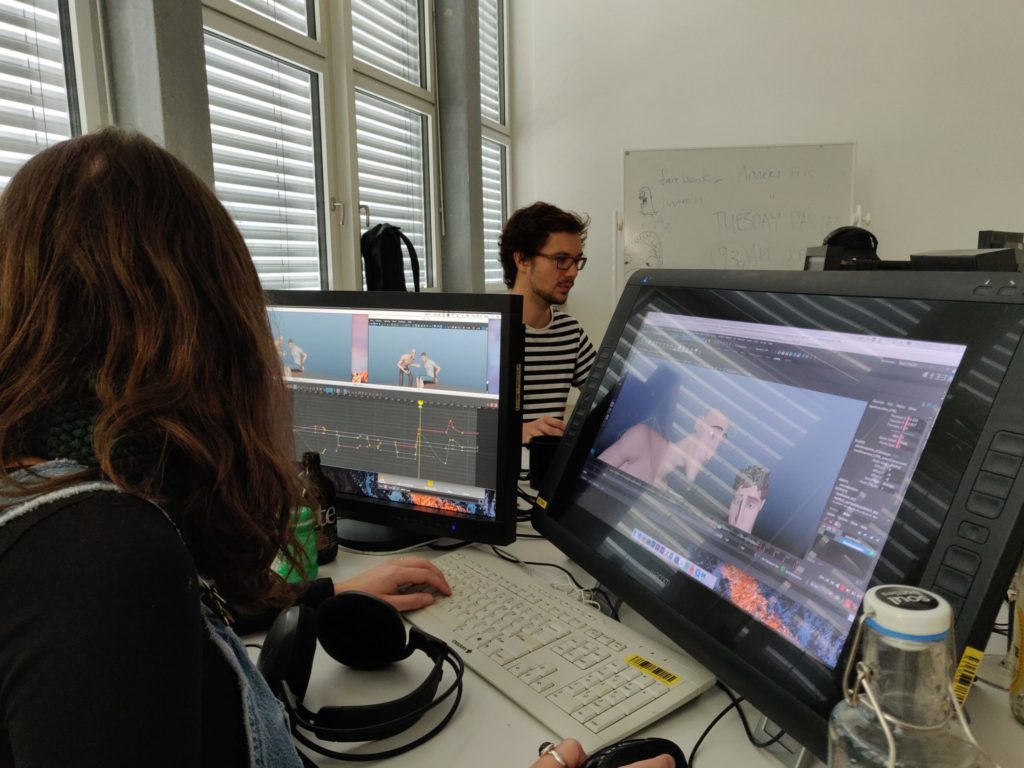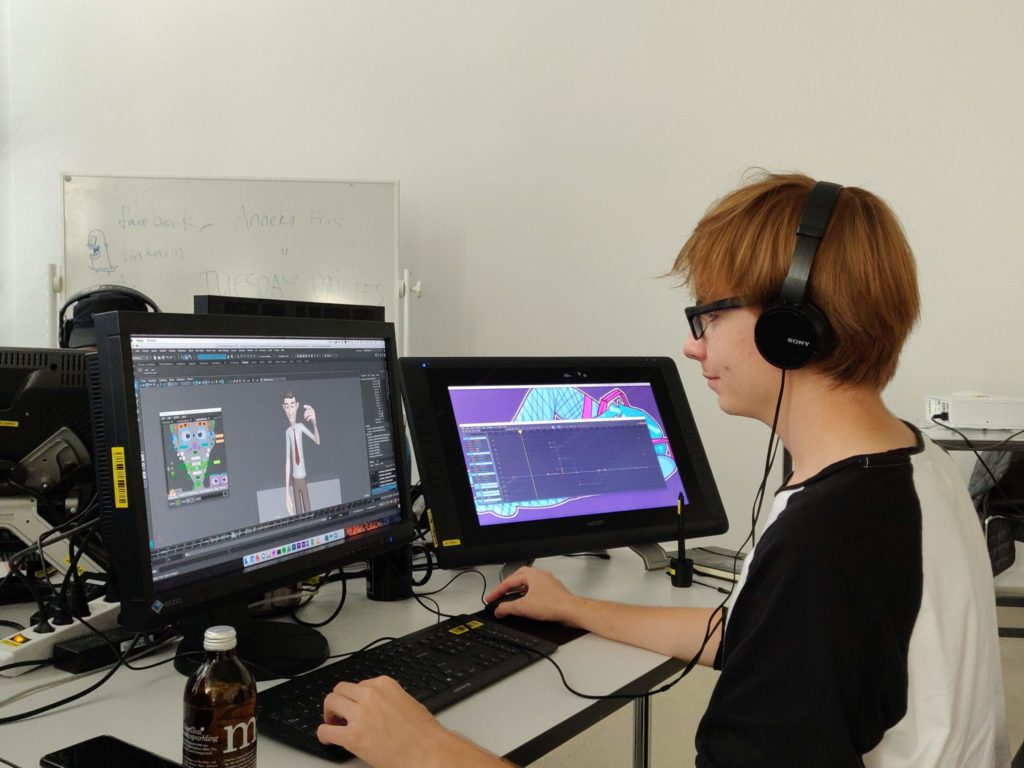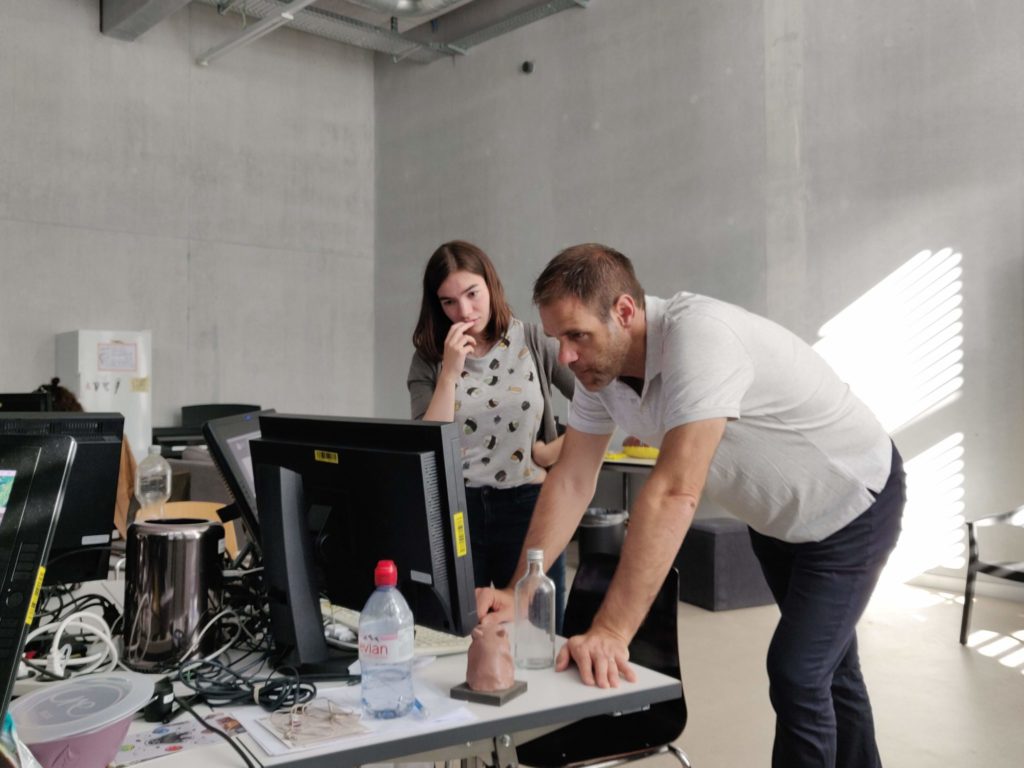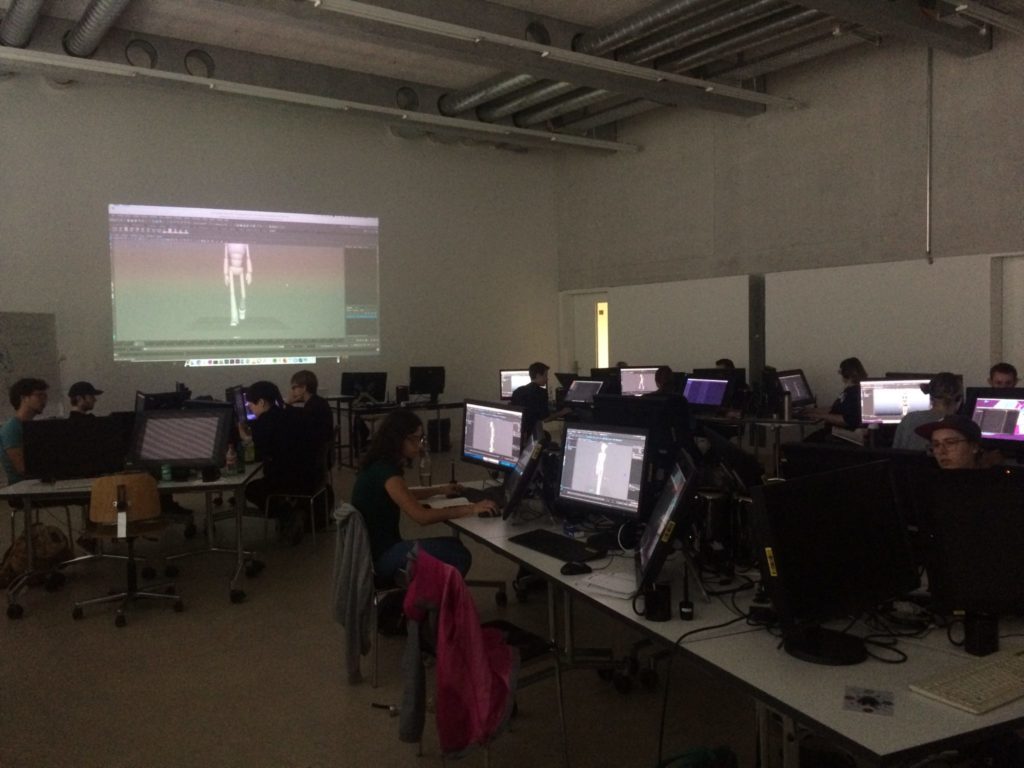Looking back at LuMAA 2019
8. November 2019
Looking back at LuMAA 2019
8. November 2019
Character Walk week 1 written by Vera Falkenberg
Everything started with the character walk course by Cody Lyon. Cody showed us the layered animation workflow which was new for most of us. He also showed us a lot of his great work he does at Pixar and how it is to work there.
By the end of the week we had learned a lot and had many creative, funny and well animated character walks to show.
2 WEEK – CLOSEUP ACTING SHOT / LIPSYNC. written by Nadja Schöpfer
Second week was all about blinks, eye movements and lipsync. We started with small exercises like animating a blink or different versions of eye movements.

Then we chose a soundclip and started animating lipsync. and facial movements to it.
Mouth pose design, symmetry vs. asymmetry, straight vs. curve, simple vs. complex are just a few words we got to know more about.
Jae was our mentor. He is an animator working at pixar. He was just awesome in giving detailed feedback on our facial animations and we learned so much!

Creature Animation – Week 4 written by Fabienne Schwarz
The 4. week of LuMAA 19 was all about Creature Animation. It was led by Micheal Aerni who works at WETA Digital. Goal of this class was to do a walk cycle with a tiger – a quadruped walkcycle (or a runcycle). Even for those who already feel somewhat comfortable with human walkcycles, this was quite the challenge, having a second pair of legs and a “second hip” to deal with.
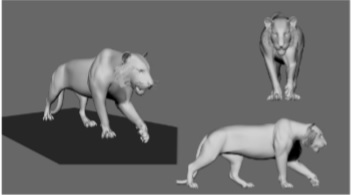
So we started all together with Michael showing us how he would start, working through each body part, starting with the feet, step size, and speed. If it seemed well enough, we moved over to hip and chest. Important was to work with reference material. Everyday we would have “dailies” – everybody uploads what they did so far and we would look at it together. This was extremely helpful, since you would talk about the most common mistakes and learn from the feedback that others get as well.

Important to note is that we never worked in stepping mode, the body parts were moving at all time to get a better sense for speed and the weight.
Towards the end of the 4. week we could come up with a shot we would like to animate in Part 2 of the Creature Module (Week 5) and start with to block it out. It was recommended to just start with simple boxes in stead of the rig, just to ge ta sense of what’s going to happen in the shot, the overall timing, weightshift, and the camera.

Here again it was very important to look for a good reference, even if you don’t stick to it entirely. The dangerous part is not to rotoscope it though – you don’t want to just copy what you see, you want to analyze and understand it.
As all the other Weeks, it was a lot of fun and extremely helpful – and the perfect preparation for Week 5 with Anneka Fris, where we would continue to work on our shots.
Woche Nummer Sechs – Polishing mit Simon Otto written by Kai Müri
Here we are. Wir sind beim letzten Schritt des Animationprozesses angelangt – dem Polishing. In der letzten Woche der LuMAA arbeiteten wir weiter an den Actingshots, welche wir zuvor mit Aron Hatfield in der Woche Nummer drei geplant und geblockt hatten. Dabei sind viele lustige, und auch anspruchsvolle Shots entstanden. Nun ging es darum, unsere Actingshots auf das nächste Level zu befördern, indem wir ihnen den letzten Schliff im Polishing gaben. Hier kam Schweizer Animationslegende Simon Otto ins Spiel. Simon zeigte während seinen täglichen Inputs, wie wir dies bewerkstelligen können, auf was wir speziell achten müssen und mit welchen Kniffen sich Zeit und Nerven einsparen lassen. Mit den Tipps und dem professionellen Feedback ging das penible herumschieben von Interpolationskurven nicht nur schnell voran, sondern machte auch noch unglaublich viel Spass. Auch vom produktiven Arbeitsumfeld mit den vielen motivierten und talentierten Studierenden konnten wir nur profitieren. Wir motivierten uns gegenseitig, um das Beste aus unseren Shots herauszuholen. Durch das stetige gegenseitige Feedbacks untereinander, schulten wir unsere Augen auf allfällige Unstimmigkeiten im Acting, Spacing oder Timing.
Simon Otto liess es aber nicht nur bei den technischen Aspekten des Animation Handwerkes bleiben, sondern füllte seine Inputs auch mit diversen Industrie Anekdoten und gab uns wertvolle Tipps zu Bewerbungsprozessen, Portfolios, Showreels mit auf den Weg. Und so verging auch die letzte Woche der LuMAA wie im Flug.





